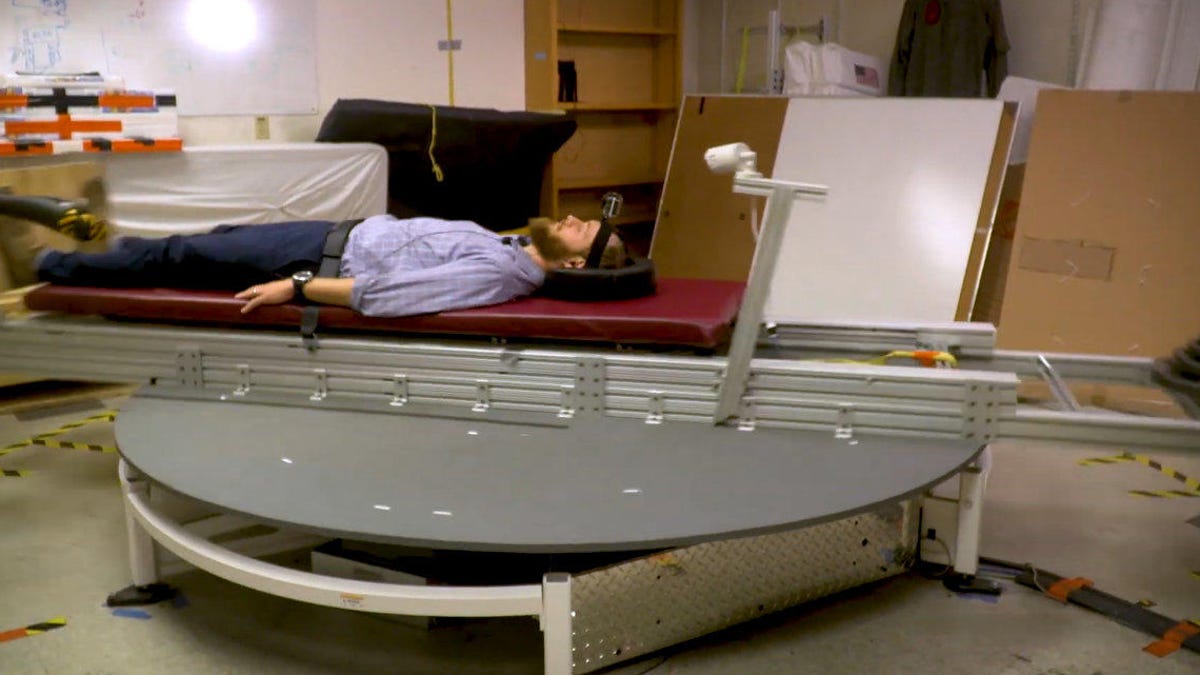Scientists are working on artificial gravity that won't make you barf
You spin me right round, baby, right round.

University of Colorado Boulder researcher Torin Clark rides a centrifuge.
Star Trek has it. Star Wars has it. Battlestar Galactica has it. In most science fiction, everybody strolls around in artificial gravity, but despite the nausea that might come with this sort of technological magic, nobody throws up. Researchers at the University of Colorado Boulder want to turn this sci-fi dream into reality, after a fashion.
Bone and muscle loss are just two of the problems associated with spending extended time away from gravity. The issue becomes more pressing as we look ahead to sending astronauts back to the moon and onward to Mars.
A volunteer sits in an artificial gravity simulator.
One of the most convenient ways to create artificial gravity is to spin people around in a centrifuge. NASA and the European Space Agency have been testing this concept on Earth-bound volunteers. If that sounds stomach-turning, that's because it is. Motion sickness is a serious problem.
The Colorado team envisions future astronauts heading into an artificial-gravity room to spend time on a small revolving system with the aim of counteracting the negative effects of weightlessness. But they don't want space travelers to get sick in the process.
The scientists are developing a way to deal with a symptom called "cross-coupled illusion" that happens when you spin a person around and that person turns her head. The inner ear essentially has a freak-out, triggering a falling sensation and motion sickness.
The team spun a group of volunteers on a centrifuge in an upright seated position, but started each off incredibly slowly, at a rate of just one rotation per minute. Once the person acclimated, the researchers were able to increase rotations a little at a time until they got the volunteers spinning comfortably at an average of 17 rotations per minute, an impressive performance.
"The point of our work is to try to get more people to think that maybe artificial gravity isn't so crazy," graduate student Kathrine Bretl said in a CU Boulder release on Tuesday. "Maybe it has a place outside of science fiction."
The university released a video showing a research centrifuge in action. It's called a Human Eccentric Rotator Device (HERD). The device is compact enough to fit into a small room, as opposed to the giant space station-sized spinning circles conceived of in science fiction.
"As far as we can tell, essentially anyone can adapt to this stimulus," said CU Boulder aerospace engineer Torin Clark, co-author of a study on the spinning method published in June in the Journal of Vestibular Research.
The volunteers' ability to acclimate to the centrifuge is promising, and leads to some additional questions, including how much artificial gravity would be needed to counteract the negative impacts of living in space.
The study hints at a possible future where astronauts take regular spin breaks. It's not quite Star Trek, but it just might work.

